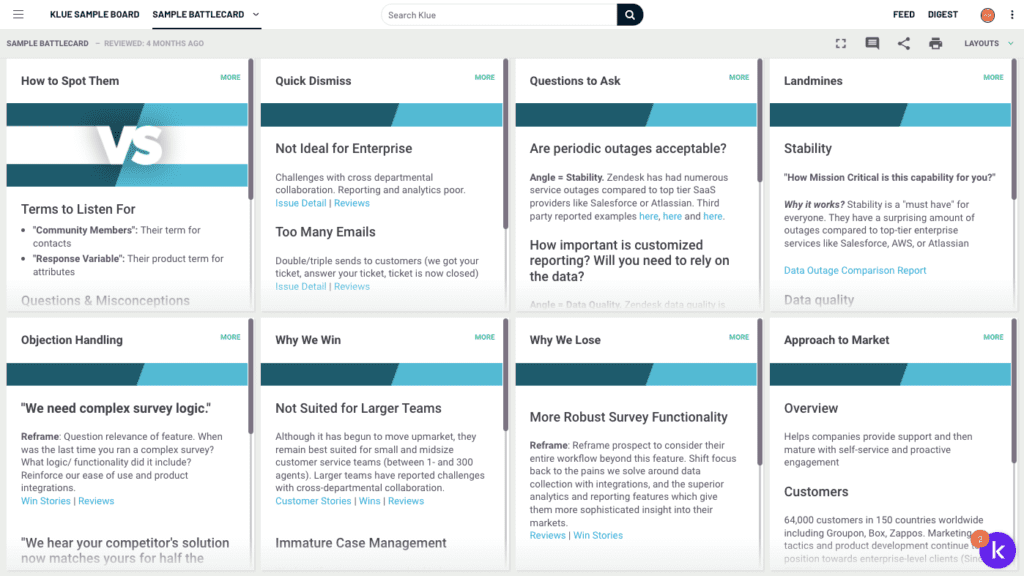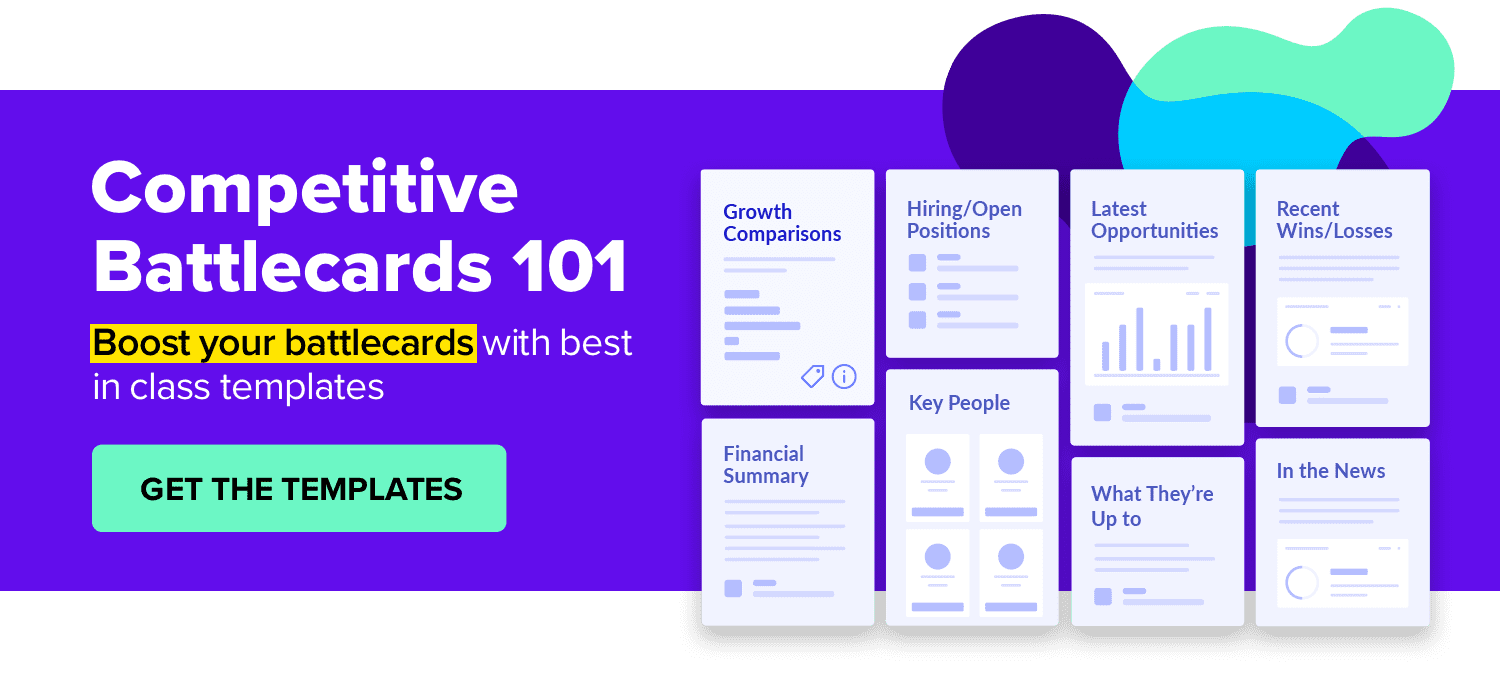Klue Compete
The Competitive Enablement Platform
Learn More
INTRODUCING KLUE INSIGHTS
FIND OUT MORE >

We speak to people from companies of all sizes and across industries around the world. One thing they have in common is the question of how to most effectively use sales battlecards to win more deals. So, here are some of the top questions and answers about sales battlecards questions and answers to help you fast track your success.
First, decide who this battlecard is for. Most commonly, battlecards are for your sales team. However, we’ve also seen them used for executives, product teams, and marketing. There are others, but those are the main ones.
Within your salesforce, you may have sub-teams. You are not going to create the same content for your SDRs as you are for your Account Executives or Account Managers. Each group needs different types of information at their fingertips because they are encountering a prospect at different stages of the buyer journey.
Your CEO wants intel that will help them gain a better understanding of the market and what’s happening in it to make better business decisions. Whereas an Account Manager needs to know how to handle common objections while an SDR needs to be able to provide a quick dismiss. Think along those lines. Once you know who your audience is, you can tailor your content accordingly.


A battlecard is commonly made up of several individual cards, each containing laser-focused content. The key is to keep the content up-to-date, short, easily digestible, and linked to proof.
Here is a list you can use for guidance for your first battlecard. You can learn in much more depth about each of these on the links below:
It depends on how you decide to organize your battlecards. We recommend a tiered approach. Identify the competitors that come up most often in deals (average is one to three of these). These are your biggest threats — your top tier.
It’s best to start with one really good battlecard per competitor. Get your team engaged with it. Once they trust the content and love using your battlecard — by all means go ahead, build more!


You probably don’t have to start from scratch. Most companies have loads of content, but it is scattered. Intel can be found on various network drives, emails, SharePoint, Salesforce (or another CRM), and hard copy PDFs.
If you want to look outside what you already have here are some sources where you can find competitive intel:
Now, gather what you have, assess what you think is most relevant and try to consolidate it all into one or two pages. The battlecards listed in the answer above are a good place to start. Decide topic headings within your battlecard and map your existing content to the relevant headings. Then, run it past the people on your team and the sales team. Get their buy-in and pivot if necessary with their feedback.
A CI platform is pretty helpful at this stage, but you can do it manually in a Word or Google Doc. Or, even good old fashioned pen and paper!
If you have the statistics, see which content is your most-used by your salespeople. If you don’t have that data at your fingertips, go ask them which pieces they like and use regularly.
I’ve seen product marketing teams start down the path of creating battlecards assuming that they know what the relevant intel is for sales. They input information into their cards. They present the battlecards to sales. Then, the battlecards never get used. Don’t make this mistake.
Your salespeople are the ones you are making this intel for. So get their insights from the get-go about what they will actually use. Because if they don’t use them, you are back at square one.
There are many ways, but most useful is to look at your sales team’s win/loss data. Win/loss data will tell you exactly (or pretty close) who your team is losing to the most and who your most relevant competitor is. So, start there. You don’t have unlimited time, maximize it. Focus on your biggest competitor.
Read: 10 Metrics to Measure Your Competitive Intelligence Program
Make sure that your competitive intel is current and accurate. The only thing worse than having no intel is having out-of-date or incorrect intel. That is the fastest way to lose the trust of your sales team.
Do a quick audit of your content. If it is more than six months old, there’s a good chance it’s out of date. This is especially true in the B2B tech space where things like product features, mergers & acquisitions, and executive changes can move quickly and can be good indicators of strategic changes with your competitor.
First of all, there is no magic bullet (sorry). It is going to be work and it will take some time. So, now that we got that little dose of reality over with, here’s the good news. When you build battlecards well, with thoughtful consideration, maintaining them and getting user adoption is a breeze.
If you follow the steps above, we promise it will be faster in the long run because you won’t have to redo it from scratch in six months.




Competitive Enablement
The topic of Large Language Models (LLMs) has a lot of confusion. Here's what you need to know about how Klue is working with them.


Competitive Enablement
Product Marketing
If your competitive intel game is too strong for automation, too pure for data privacy, and too rebellious for accuracy — then Klue AI is probably not for you.


Let’s do it. Tell us a bit about yourself and we’ll set up a time to wow you.
Let's do it. Tell us a bit about yourself and we'll set up a time to wow you.
XLet's do it. Tell us a bit about yourself and we'll set up a time to wow you.
XSubscribe to get our latest AI functionality and news in your inbox.
XOur Buyer Pulse feature, set to launch in Q2 2024, offers valuable insights into the factors influencing buyer decisions in your pipeline. By signing up for the waitlist, we can better gauge interest and proactively engage with you to streamline the setup and integration process before the feature becomes widely available.
X